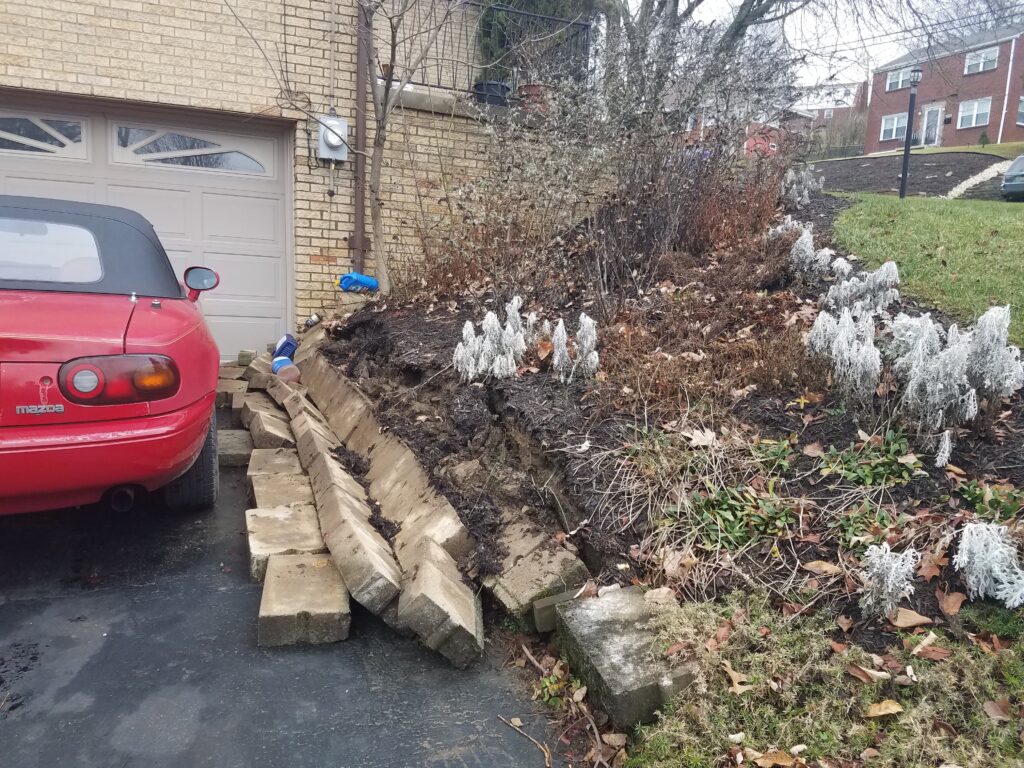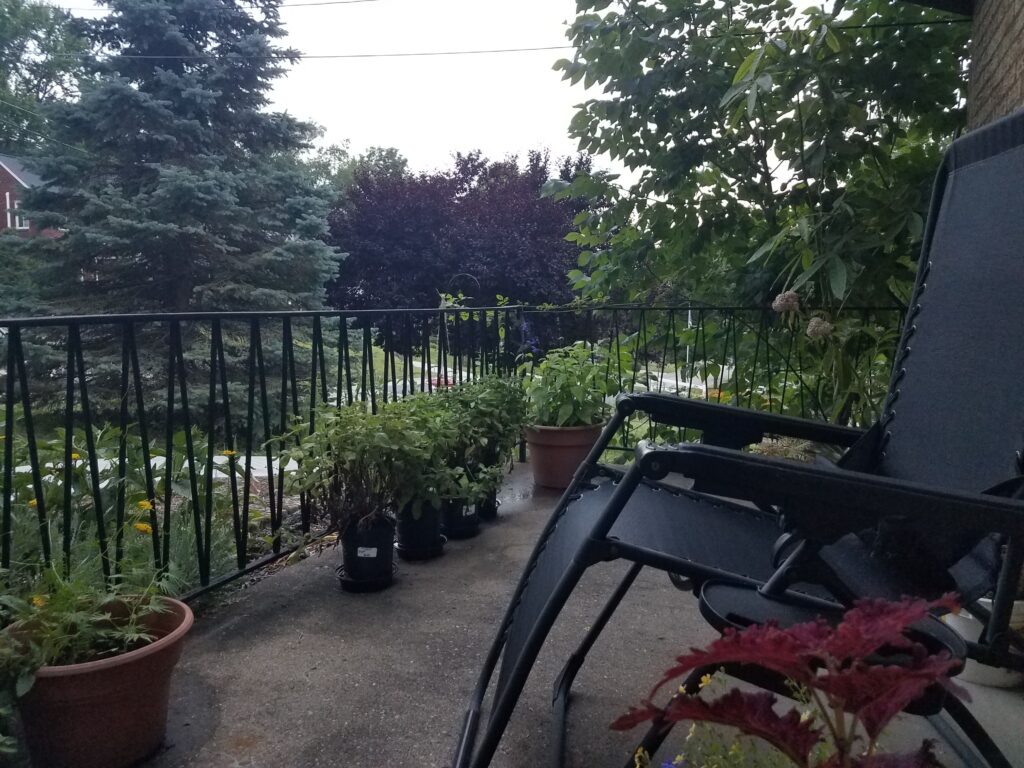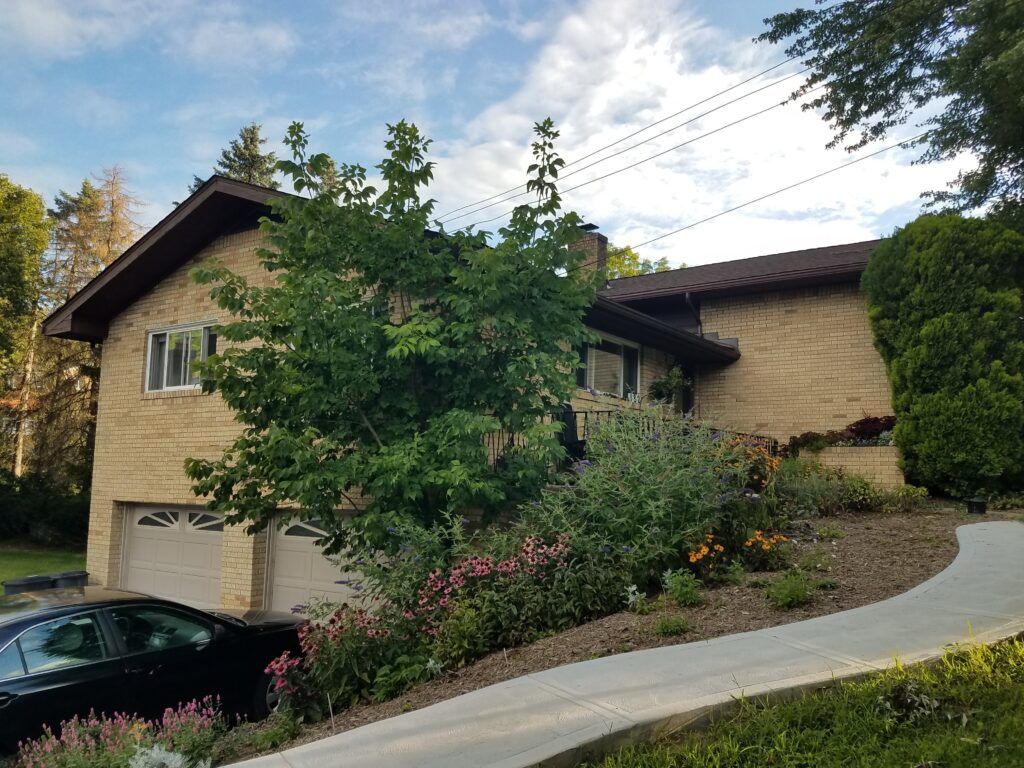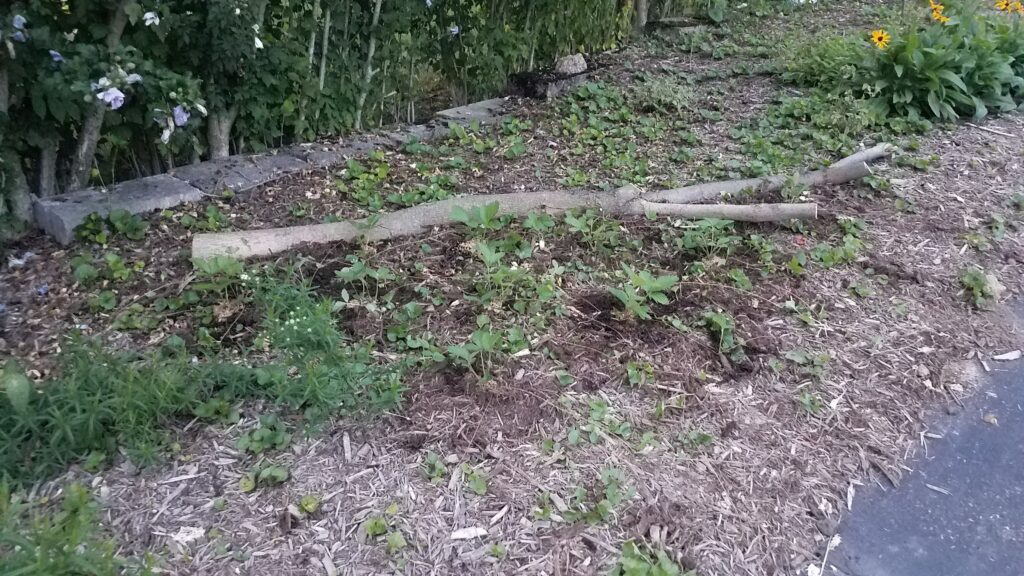Part 1 – The Ash Tree
Apparently Christmas Eve is not a lucky day for our house. Twice in a row, we’ve had a piece of deferred maintenance reveal itself on the day before Christmas. Two years ago, our roof leak started up again, necessitating a rapid deployment of buckets and pans in our attic and living room during the holiday. Fortunately we were able to get that issue taken care of relatively quickly – once I figured out our new roofing situation, that is.[1] Last year, the retaining wall in our driveway collapsed, narrowly missing my Miata.

In truth, the wall had been shifting for some time, and its angle of tilt toward the driveway (instead of into the hillside) had become more pronounced in recent years. I assumed that part of the reason was because I had been converting the hillside from lawn into garden, digging up clay and mixing it with compost and topsoil as new plants went into the ground. While that may have played a small part, the real culprit in the end appeared to be a small tree that began growing against the house around the time I moved in and started the garden conversion.
Because I had watched the tree grow there over several years, I became quite attached to it and thought it added a very nice aesthetic to the corner of the house, where it provided some privacy and shade to the porch, as well as an anchor to the landscaping. Unfortunately, it was much closer to the house than even a small tree should be, meaning it would eventually cause damage to the foundation – the retaining wall was only the beginning. Ultimately the tree would have to come out. As upset as I was by the idea of losing the tree, I was even more upset when I found out that it was an ash, which is critically endangered.
Ash Tree Decline
I wasn’t sure what kind of tree it was until the day we took it out. The internet and a friend who does landscaping helped us determine that it was most likely a white ash (since it was still young, it didn’t have all of the identifying characteristics of an adult). Even though I consider myself to be pretty good at identifying plants, I couldn’t say that I even knew what an ash looked like or whether I had seen one in recent years. Part of the reason is that their numbers have been drastically declining since the introduction of the Emerald Ash Borer (EAB), an invasive green jewel beetle that feeds almost exclusively on ash trees.[2]

The EAB is native to northeast Asia where it is more of a nuisance animal, preying on weak or diseased ash trees. North America has no natural EAB predators, and our ash trees are more susceptible to its activity; here the beetle is highly destructive and has led to a steep decline of ash trees in the Midwest and Eastern US. The first recorded instance of EAB was in Detroit in 2002, where it likely arrived on a wooden shipping crate. Since then, an estimated 40 million ash trees have died in Michigan alone, along with tens of millions more following in the surrounding states and provinces.[3]
Rates of decline and impact have been so severe that the US Department of Agriculture dropped their ineffective quarantine program at the end of 2020.[4] The EAB has been fatal to nearly 100% of ash trees in areas where it was first identified; national parks on the east coast have estimated a decline from approximately 300,000 to 80,000 ash trees since 2014.[5] For urban areas that must deal with the maintenance, removal, and replacement of dead ash trees, cost estimates are in the billions of dollars per state, borne largely by homeowners and municipalities.[6]
Efforts are underway to combat the EAB, including treating trees with systemic pesticides [7] and releasing non-native predators that kill emerald ash borers at multiple stages of development,[8] but those measures can be costly and risk unforeseen consequences. At the moment, it does not seem we will be able to reverse the effects of the EAB, but only slow the inevitable.

Hard Decisions
The emerald ash borer (and the biological and economic consequences associated with it) could easily be the subject of its own blog post or even series. I mentioned it here to illustrate the increased anguish I felt upon having to remove a tree that I loved, learning that it was endangered. All in all, the young tree would have undoubtedly fallen victim to the EAB and died within a few years anyway, and that may or may not have happened before its roots did serious damage to the foundation of our house. Even so, none of that made the decision any easier.
Even small trees (those maxing out at 30 feet tall) should be planted about 10 feet or more away from the foundation of a house.[9] A mature white ash can grow to be over 80 feet tall, meaning it should be no less than 20 feet from the house. (Though it remains to be seen how many ash trees will grow to maturity in the years to come.) This tree – “my” tree – was close enough to the house that there was barely enough room for me to squeeze around it. There really was no way to justify keeping it. A neighbor suggested we try to relocate it to somewhere else in the yard, but as we would see upon removal, that wouldn’t have been feasible (and who knows how long it would have survived anyway, given the EAB).
My affinity for trees really cannot be understated. I spent my undergraduate years at a school that styled itself “The University in the Forest.”[10] The connection to and respect for the natural environment was one of the first things that attracted me to the school: during my campus visit as a high school senior, I learned that a multi-million dollar arts center had to be redesigned so as not to harm the root system of an old and much-beloved tree. On the one occasion during my time there that trees had to be removed for a building expansion, the decision was not made lightly, and the trees were honored with a ceremony before they were taken down.

When it came to the issue of “my” ash tree at home, I chose to be as involved as I could with the removal process, in a very A Game of Thrones, “the man who passes the sentence should swing the sword,” way.[11] After cherishing one last chance to sit in its shade, I took one morning while Christian was away to prune, and then trim, and then remove whatever branches I could on my own. Christian (and his car) helped with the removal of the trunk and root ball once he returned, and I put the trunk in the garden, where it can serve as shelter for small creatures until it ultimately decomposes.
~
With the emotionally difficult part of the project done, the physically difficult part was yet to come, and that is where we will pick up next week.
Have you battled with the emerald ash borer or lost a tree that you loved? How did you deal with it?
Thanks for reading!
[1] https://radicalmoderate.online/my-cabin-doesnt-leak-when-it-doesnt-rain-part-1/
[2] http://www.emeraldashborer.info/
[3] https://www.arborday.org/trees/health/pests/emerald-ash-borer.cfm
[4] https://www.pestalerts.org/official-pest-report/aphis-changes-approach-fight-emerald-ash-borer-eab
[5] https://www.nps.gov/articles/000/ash-tree-update-2021.htm
[6] https://www.fs.usda.gov/research/treesearch/18948
[8] https://www.youtube.com/watch?v=Jc668J_TxYs
[9] https://mrtreeservices.com/blog/planting-trees-near-your-house/
[10] https://drew.edu/
[11] https://www.goodreads.com/book/show/13496.A_Game_of_Thrones
0 Comments